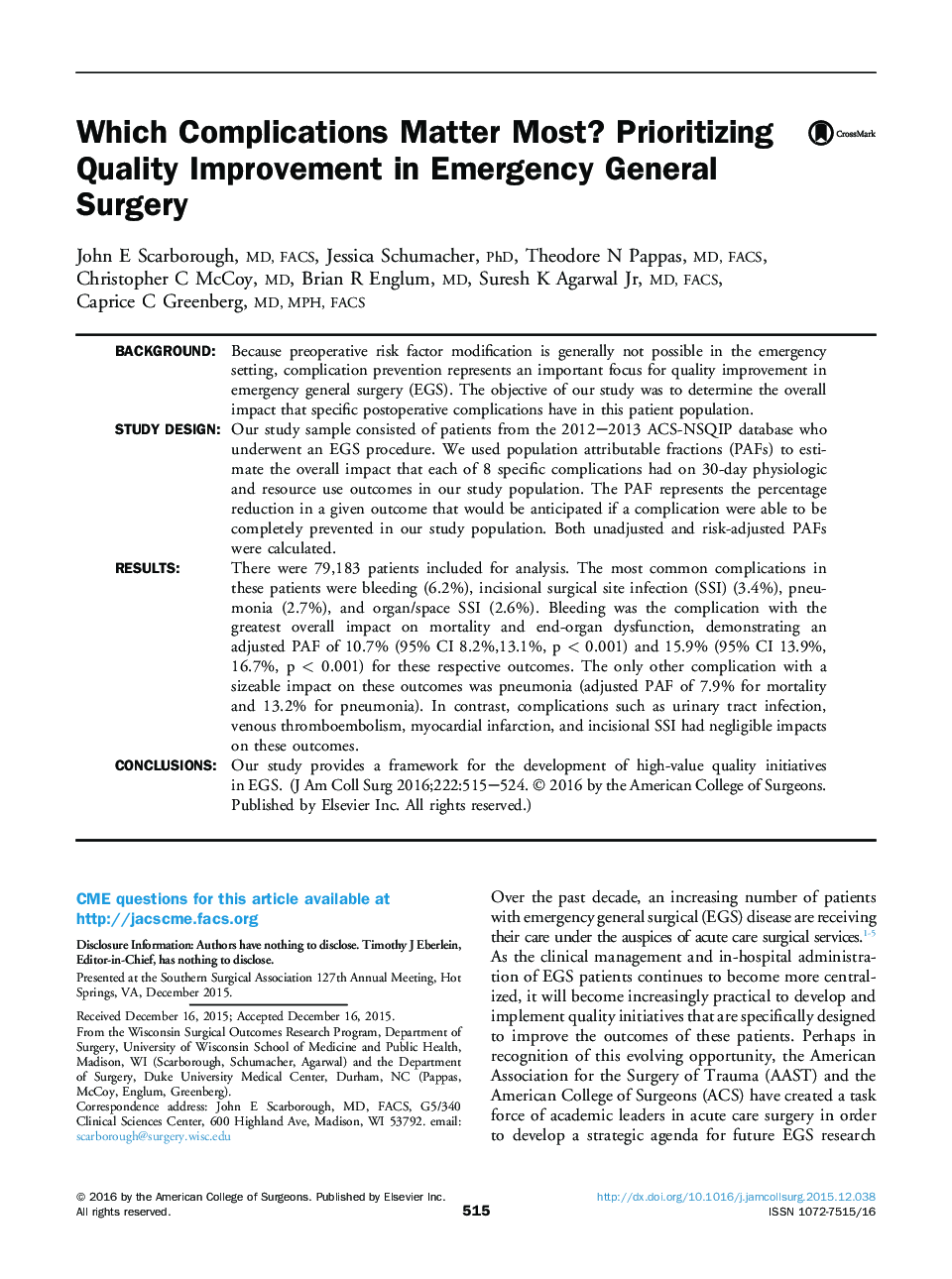| Article ID | Journal | Published Year | Pages | File Type |
|---|---|---|---|---|
| 4290745 | Journal of the American College of Surgeons | 2016 | 10 Pages |
BackgroundBecause preoperative risk factor modification is generally not possible in the emergency setting, complication prevention represents an important focus for quality improvement in emergency general surgery (EGS). The objective of our study was to determine the overall impact that specific postoperative complications have in this patient population.Study DesignOur study sample consisted of patients from the 2012–2013 ACS-NSQIP database who underwent an EGS procedure. We used population attributable fractions (PAFs) to estimate the overall impact that each of 8 specific complications had on 30-day physiologic and resource use outcomes in our study population. The PAF represents the percentage reduction in a given outcome that would be anticipated if a complication were able to be completely prevented in our study population. Both unadjusted and risk-adjusted PAFs were calculated.ResultsThere were 79,183 patients included for analysis. The most common complications in these patients were bleeding (6.2%), incisional surgical site infection (SSI) (3.4%), pneumonia (2.7%), and organ/space SSI (2.6%). Bleeding was the complication with the greatest overall impact on mortality and end-organ dysfunction, demonstrating an adjusted PAF of 10.7% (95% CI 8.2%,13.1%, p < 0.001) and 15.9% (95% CI 13.9%, 16.7%, p < 0.001) for these respective outcomes. The only other complication with a sizeable impact on these outcomes was pneumonia (adjusted PAF of 7.9% for mortality and 13.2% for pneumonia). In contrast, complications such as urinary tract infection, venous thromboembolism, myocardial infarction, and incisional SSI had negligible impacts on these outcomes.ConclusionsOur study provides a framework for the development of high-value quality initiatives in EGS.
